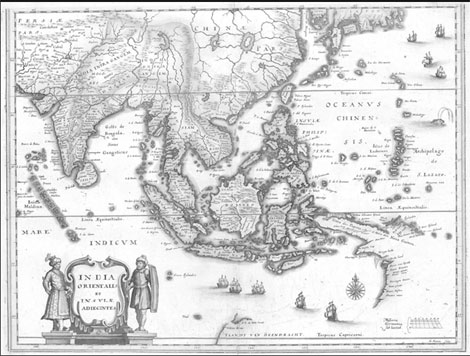Historic maps offer an investment safe haven
Updated: 2010-10-09 06:57
By Ann Williams(HK Edition)
|
|||||||||

Old maps provide a wonderful way to capture a moment in history. Whatever the reason for collecting them - the places, the techniques or the aesthetics - they are valuable in their own right. It can be a very pleasurable way to invest your money in a safe haven.
Jonathan Wattis of Wattis Fine Art, which specializes in antique maps and images of the region, says: "You can start to collect old maps, even 16th-century ones, without breaking the bank." Prices start as low as HK$2,000, and go up to around $60,000-80,000. For a truly collectable map you should expect to pay HK$15,000 upwards. Chris Bailey, owner of Picture This in Hong Kong, says: "If someone wants to invest $500,000 in maps, I'd say don't pick 100 pieces - go for more like five to 20 maps."
As well as buying directly from dealers, maps can be sourced through auction: top names include Swann Auction Galleries of New York, and Bonham's of London, which has a well respected map department. There are also a number of online auction sites. If you plan to collect maps of areas other than Asia, seek out dealers based in the places you're interested in and build up a relationship with them, and then buy online.
Both Wattis Fine Art and Picture This have seen the nature of their business change greatly thanks to the internet. Both are frequently contacted by sellers offering maps they may be interested in. "Also, we find visitors to Hong Kong come into our shop to browse, but they don't want to carry the maps away with them, so they order them through the website once they have returned home," says Bailey. "It's very easy for people to check and compare prices online."
The prices of antique maps depend on age, rarity, quality of the impression, condition and geographical area depicted. "Hong Kong is a very transitory place, hence financiers or diplomats posted here for three or four years often go for maps of the region while they are based here," says Wattis. "Others, however, may prefer to focus on a single period in history or one particular mapmaker."
The earliest maps on the market are generally from the 16th century. "The earliest one I have ever sold dated back to 1538," says Wattis.
Among notable cartographers to look out for are Abraham Ortelius (1527-1598), who mapped parts of China, Southeast Asia and Japan; John Speed (1552-1629), known particularly for his "carte-a-figure" style, with decorative depictions of characters in national or regional dress around the margins; and Jodocus Hondius (1563-1612), the Flemish mapmaker.
Maps are not immune to trends, however. Twenty years ago, buyers in Hong Kong were keen to source old maps of Japan, while more recently maps of the East Indies have been selling at a premium, but now it is the maps of China that are most in demand. "We are getting increasing numbers of mainland Chinese coming to buy," says Bailey.
The condition of the map will have a bearing on the value - if you have two prints of the same map and one shows signs of mold and has insect holes, it will be worth less than the other in a better state. However, if the damaged map is relatively rare, it will still hold considerable value.
Early maps were not colored, but color was often added later. This will always be indicated by the dealer and does not affect the value - in fact, the earlier the color, the more value it adds. If you wish to restore the color, Wattis advises that you employ the best and most experienced colorist possible.
Forgeries do not present as much of a problem as in other areas of the art world. To produce a map that really looks authentic would require a huge amount of effort, because the only way to achieve it would be to make a copper engraving - no mean feat. Bailey points out that if 100 prints of a particular map suddenly turned up on the market, dealers and experts would become suspicious right away. "Of more concern to map experts are those that have been stolen from dealers and libraries," says Bailey.
(HK Edition 10/09/2010 page2)